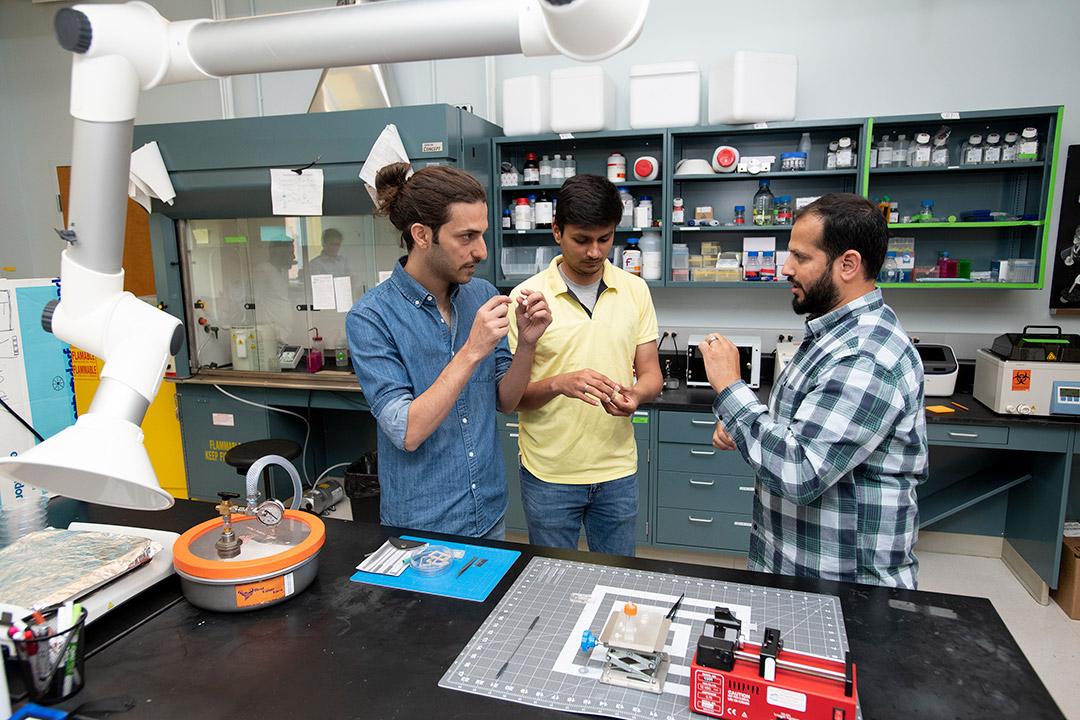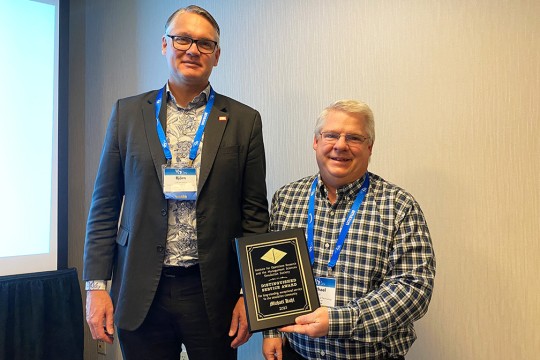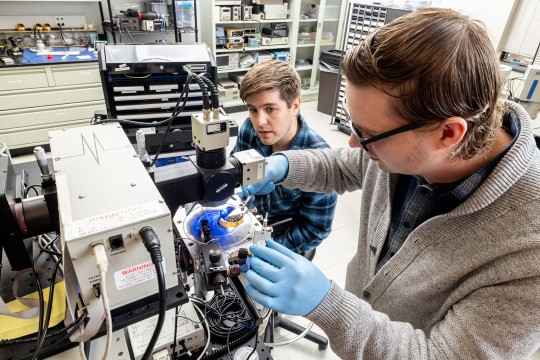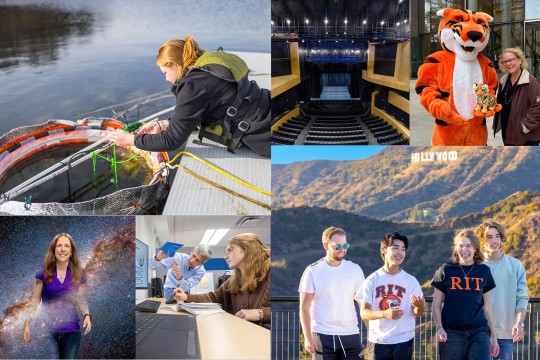Vinay Abhyankar receives NSF grant to assess cancer cell migration processes
University biomedical engineering research team aims to identify how collagen fibers influence cell behavior
A. Sue Weisler
Vinay Abhyankar, right, assistant professor of biomedical engineering, received an NSF grant to assess cancer cell migration processes. He works closely with two doctoral students in his lab, Mehran Mansouri, left, and Indranil Joshi on the research. Both students are in the biomedical and chemical engineering doctoral program.
Cancer spreading from the primary tumor location to another is called metastasis and is the leading cause of cancer-related death worldwide. Research efforts today focus on discovering the guidance cues, or indicators, that promote movement of cancer cells toward blood vessels during early metastasis, and some of that work is taking place at Rochester Institute of Technology and the University of Rochester.
Researchers received a grant from the National Science Foundation to determine how collagen fibers, part of the tumor microenvironment, influence cancer cell migration behaviors. This research into two key properties—fiber alignment and fiber internal structure—will provide insights needed to block cell movement and identify possible targets for treatment.
Vinay Abhyankar, assistant professor of biomedical engineering in RIT’s Kate Gleason College of Engineering, and Edward Brown, associate professor of biomedical engineering and neuroscience at the University of Rochester (UR), will use information from imaging and analysis of human biopsy samples to develop 3D tumor-mimetic collagen hydrogels in the laboratory.
These hydrogels, or in vitro models of the actual tumor, contain different combinations of the properties found in the tumor microenvironment. This novel approach will allow for identification of how collagen fiber properties work together to influence the migration of cancer cells.
Abhyankar describes the tumor cell motion similar to cars moving on a highway.
“Aligned collagen fibers can be thought of as the roads tumor cells follow as they invade and migrate through the tumor microenvironment, while the fiber internal structure is a measure of road quality. In the clinic, both have been shown to predict cancer metastasis,” said Abhyankar, who leads the Biological Microsystems Research Lab in the development of technologies to investigate how cells respond to their local environment. “However, it is unknown how these multi-scale properties work together to influence tumor cell invasion.”
In discovering how the properties influence movement, Abhyankar and team will create 3D “tumor-mimetic” hydrogels with different combinations of collagen properties identified from human tumor samples. This new platform will help identify combinations that promote the rapid and persistent migration of several cancer subtypes through the tumor microenvironment toward blood vessels where they can enter the systemic circulation.
“With these fundamental new insights, we can help improve metastatic risk predictions and identify potential therapeutic targets based on cancer subtype,” said Abhyankar.
The three-year project, “Collaborative Research: Microengineered Tumor-Mimetic Collagen Landscapes to Test the Role of Prognostic Structural Cues on Cell Migration Through the Extracellular Matrix,” is part of the National Science Foundation’s Collaborative Research initiative. Each university receives separate funding for specific aspects of a major research project, with Abhyankar as principal investigator, for RIT’s contribution to the research, and Brown, taking on a similar role at UR. Both will engage graduate and undergraduate students from each university. A cross-university summer research program will also be established to provide undergraduate students with hands-on experience related to biomaterials, bio-fabrication, and advanced imaging techniques.






